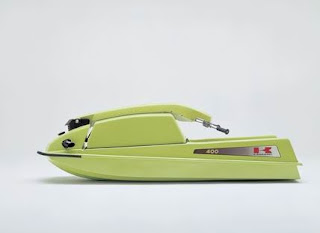Minggu, 04 September 2016
Steps To Take After An Accident
Being involved in a motorbike
accident can be a traumatic experience.
What should I do after my motorbike accident?
1. Talk with the emergency services: when the emergency services arrive at the scene of the
motorbike accident, you should give a full report to the police. Emotions tend
to run high after an accident, but it’s important to stay as calm as possible.
2. Swap insurance details: if you are involved in a road traffic accident, make sure
that you swap details with the parties involved in the collision.
3. Record details of your motorbike
accident: take photos of any damage to
yourself on your camera, and try to note down information about the location
and driving conditions. Take the images and jot down the information as
soon as possible, as these details can act as valuable evidence during a
motorbike accident claim.
4. Don’t fix your bike: you may be tempted to get your bike fixed right after a
motorbike accident. However, the authorities will consider its condition as
evidence along with the clothes you were wearing.
5. Start a claim: if you find insurance costs too much after an
accident, you could try adjusting your voluntary excess of cover, which could
bring prices down.
Jumat, 02 September 2016
Riding A Motorcycle, Moped Or Motor Tricycle
You first need to get
a provisional licence and complete CBT if you want to ride a
motorbike and a moped. Provisional
category B car licences and provisional category A licences now only cover you
to ride motor tricycles if you have a physical disability. You can drive a motor tricycle of any
power rating if both of the following are true:
1.
You’re over 21.
2. You have a full car driving licence.
You’ll need a full
category A1 motorbike licence to ride motor tricycles up to power output 15
Kilowatts, and a full category A motorbike licence to ride trikes with a power
output more than 15 kW. I recommend all riders take a Motorcycle Safety
Foundation (MSF) course before getting their license.
You need to have the right provisional driving licence when
you’re learning to ride. Riding a motorcycle can be extremely dangerous. If you’re using your own vehicle you’ll need to make sure it:
1. has a valid V5C registration certificate.
2. is taxed.
3. has an MOT.
All riders have to pass the theory
test before taking the motorcycle practical
test.
Selasa, 19 Juli 2016
Minggu, 03 Juli 2016
Sabtu, 02 Juli 2016
Jumat, 01 April 2016
Senin, 28 Maret 2016
Minggu, 27 Maret 2016
Rabu, 16 Maret 2016
Kawasaki ER-5
The
Kawasaki ER-5 is a naked
commuter motorcycle produced in Japan by Kawasaki, has a twin piston front disk
brake and a rear drum brake. Unlike many modern motorcycles, with fixed caliper
and floating disk, the ER5 has a
fixed disk and floating caliper. 'A' model owners often fit caliper units from
'C' models.
The
ER5 uses standard motorcycle controls; left hand clutch, right hand front brake
and throttle, left foot gear stick, right foot rear brake.
Jet Ski Kawasaki Short Overview
The story of Jet Ski began when Clayton Jacobson II, the known inventor of the
original personal water craft, sold the rights to his patent to Kawasaki.
The year 1976 brought Kawasaki to
mass-produce their Jet Ski. This year gave birth to the JS400 model. When the
racers and water sport enthusiasts demanded for power, Kawasaki responded and
gave them the JS440, was one of the longest-selling Jet Skis made.

The JS550 had 531 cm3 2-stroke Twin.
Feature included the automatic rpm control.
The 80’s gave birth to the JS300 that was hailed to be the
beginner’s Jet Ski, 650SX powered by a 635 cm3 2-stroke Twin, 300SX with 294
cm3 reed-valve Single with CD ignition, and the very first Kawasaki Jet Ski
sit-down water craft, the two-seater Tandem Sport™ with 635 cm3 engine.
The 90’s came with a riveting Jet
Ski models, features and designs. At
the beginning of the decade, the 550SX, considered to be a high-performing Jet
Ski, made its sale.
Kawasaki GPZ500 Review
The
Kawasaki GPZ500S is narrow and
relatively lightweight, making for quick, responsive handling. Brakes likewise.
Smooth and reliable, owners of the Kawasaki GPZ500S describe it as “bullet
proof”. Really old Kawasaki GPZ500S's tend to look a bit ragged: suspension,
brakes and bodywork need particular attention. However, overall build quality
of the Kawasaki GPZ500S is good and the engine’s reliability is without
question. High mileages are common but check for dents and bumps: many Kawasaki
GPZ500S are ex-learner or courier bikes.
The
Kawasaki GPZ500S is hardly flash but practical enough. Whilst the engine
guarantees performance, the adequate fairing, rear grabrail and useful bungee
hooks make useful, everyday additions to the Kawasaki GPZ500S. Kawasaki GPZ500S
clocks are basic but clear.
Sabtu, 12 Maret 2016
Kawasaki Ninja 650R
The
Kawasaki Ninja 650R is a faired standard
motorcycle made by Kawasaki since 2006. The 650R and faired ER-6f were
introduced in 2006. The motorcycle fits above the Ninja 250R and Ninja 500R models, which already existed in
Kawasaki's sportbike lineup, which includes the Ninja ZX models.
In
Europe, the Ninja 650R is sold as the ER-6f, the "naked" roadster
version is sold as the ER-6n. In 2009, Kawasaki introduced the ER-6n in the
USA. The ER-6f differs slightly from the Ninja 650R as it features the
passenger handlebars as standard.
Langganan:
Komentar (Atom)








